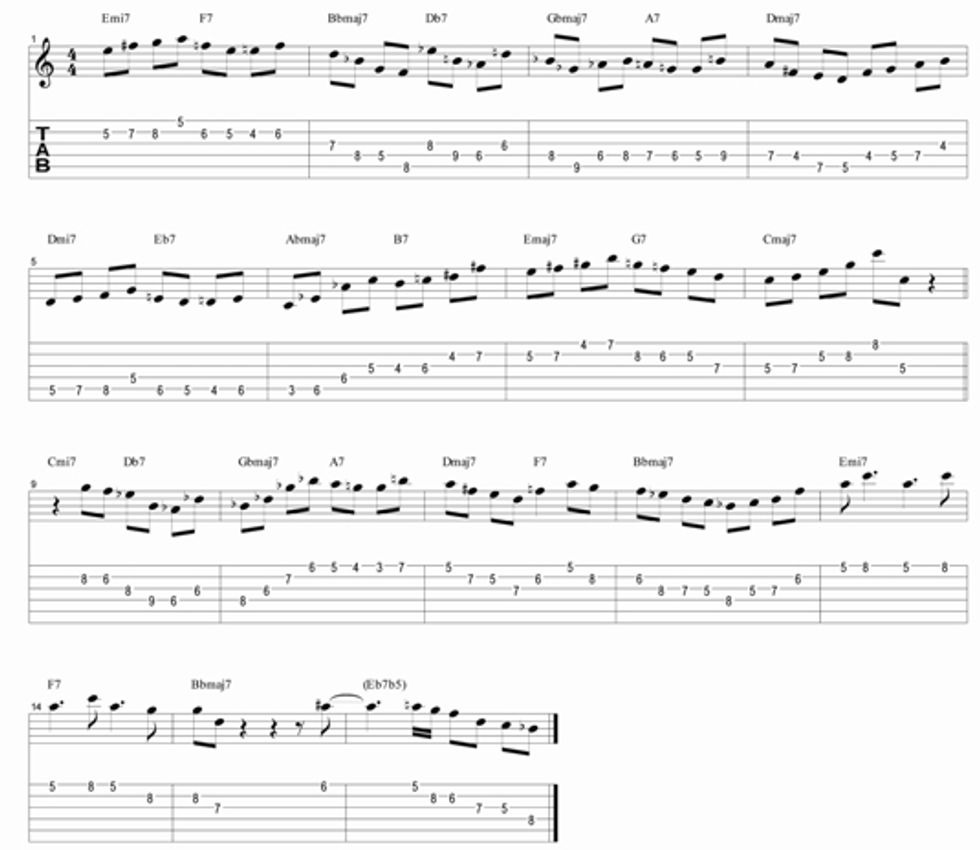Exercises with Coltrane changes.
Historically, jazz players have engaged in jam session cutting contests to show who possessed the greatest prowess over their instrument and as a means of weeding out
the beginners. Oftentimes, very tough tunes would be chosen in these sessions, specifically to challenge all present. In preparing ourselves for these jam sessions, and in the interest of expanding our repertoire, many of John Coltrane’s compositions serve as great vehicles of study for expanding our technique and our ability to easily move
through many tonal centers quickly. We credit Mr. Coltrane for developing what we now call “Coltrane changes,” where root movements take place quickly in major thirds. “Giant Steps” is the most famous composition, which illustrates that rapid succession of tonal centers. A similar Coltrane composition, which we are looking at today, is “Countdown,” a 16- bar tune.
Below you will see John’s first improvised chorus over the chord changes (adapted in concert key for guitar). The technique he relied on to navigate these quickly changing tonal centers is “digital patterns.” Essentially, these are short, pre-memorized numerical cluster patterns that allow one to blow quickly over sometimes-unrelated changes. As an example, over a Bmaj7 chord, the most common of eighth-note digital patterns is R235 – playing the root (B), the 2nd scale degree (C#), the major 3rd scale degree (D#) and the 5th scale degree (F#).
You might begin by recording the chord progression of “Countdown,” and then playing the solo over this to hear how John created interesting lines using digital patterns.
Here are my top ten four-note digital patterns that, if learned in all keys, will allow you to navigate any Coltrane composition (remember to flat the third or seventh degree when the chord calls for that, such as in a mi7 or dom7 chord):
R235
532R
3R23
5679
352R
3R75
9765
975R
79R7
35R2
As an exercise, take each pattern one at a time and play through the entire “Countdown” chord progression using only that pattern. The goal is ultimately to be able to weave these together in a way that presents an improvised melodic composition, rather than simply sounding like a technical exercise.
 |
Jim Bastian
A clinician and jazz educator, Jim Bastian is a 10 year veteran of teaching guitar in higher education. Jim holds two masters degrees and has published 6 jazz studies texts, including the best-selling How to Play Chordal Bebop Lines, for Guitar (available from Jamey Aebersold). He actively performs on both guitar and bass on the East Coast.
An avid collector and trader in the vintage market, you can visit Jim’s store at premierguitar.com (dealer: IslandFunhouse).

